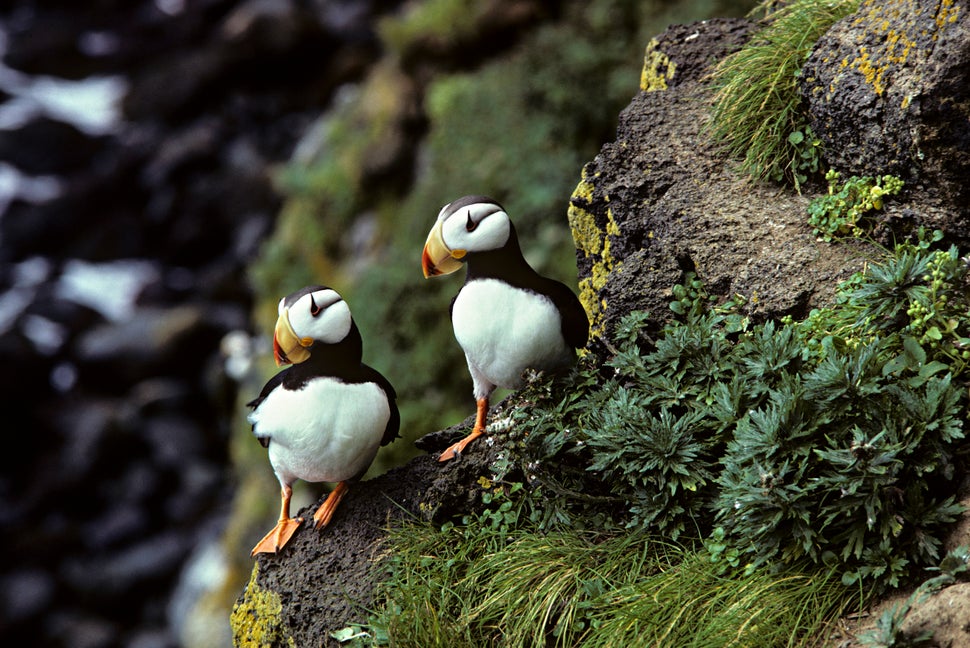Climate change could be driving the seabird to starvation, amid reports of mass puffin die-offs worldwide in recent years.
S.J. KRASEMANN/GETTY IMAGES
The puffins were not supposed to be there. Though the birds are a common sight on the Alaskan island of St. Paul, they typically fly the coop before October, heading south to overwinter.
But a few bedraggled birds had been discovered on the wind-swept, rocky shoreline of the North Pacific island during the first week of October. “It was odd because we don’t usually see them here this time of year,” said Aaron Lestenkof, who monitors the local environment as one of St. Paul’s island sentinels.
Stranger still, the puffins didn’t startle and move away when people approached them. Some fell over onto their bellies, too weak to waddle.
Local conservationists began investigating the cause of the orange-beaked birds’ incapacity. Then their probe took a grim turn.
“By mid-October the dead ones started showing up,” Lestenkof told The Huffington Post over email last week.
“The first week collecting birds, I went out every day and was picking up a carcass every 15 feet in some areas.”
Lestenkof had collected dozens of dead puffins within days, the lifelong resident of the island said.
“In past years, we would find about two or three dead puffins in a season, which was fairly common,” said Paul Melovidov, another sentinel who has spent weeks combing beaches for puffin carcasses and photographing the finds. “When you have 40 to 50 dead and fully intact puffins arrive on your shore within a week, it’s cause for alarm.”
At least 250 dead puffins have since been found on St. Paul, according to reports.
http://www.huffingtonpost.com/entry/dead-puffins-st-paul-alaska-climate-change_us_582ea97ce4b099512f823237

No comments:
Post a Comment